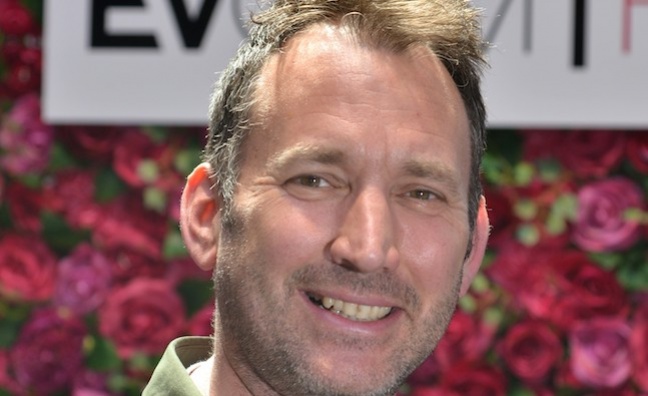The MOBOs has partnered with TV production and livestream specialist CC Lab on the virtual ceremony. The awards go live on YouTube on Wednesday night (December 9).
In the latest issue of Music Week, MOBO founder and CEO Kanya King discusses the return of the ceremony after a three-year hiatus.
Here, Jason Hocking, MD of CC-Lab (pictured) and Tupac Martir, founder and creative director of Satore Studio, take us inside their MOBOs livestream vision…
What are your plans for the livestream?
JH: “We are working together with the team at MOBO and our collaborators at Satore Studio to create something special. The MOBOs always deliver an incredible celebration of music and culture and never has it been more relevant than in 2020. If lockdown has shown us anything, it is that technology allows us to interact with each other in ways that we never thought were possible at the start of the year. The show this year will be virtual and we will have some fun with the new format and deliver some cutting-edge performances and some immersive virtual worlds.”
TM: “We understand that there is a sense of screen fatigue, so we want to break away from an all-digital show, but actually bring some humanity and almost analogue elements, having a lens of being backstage by presenting the venue for what it is, while at the same time bringing new technology to the show and a new angle to it.”
What are the challenges involved for the MOBOs?
JH: “This year has been devastating for the live music business and digital technology is helping to provide some new opportunities for an industry that has been hit hard by coronavirus cancellations. Streaming concerts has become the only viable option for audiences stuck at home desperate for live music. MOBO Awards 2020 has embraced this new normal and will bring some of the some of the biggest and most exciting artists to the screen, including Headie One feat. M Huncho, Ms Banks, Tiwa Savage and Kojey Radical.
“The main challenge is pulling this together in a very short timeframe with global artists and preparing to produce a show with a deep purpose in the current economic and political climate, all without an audience in the room.”
TM: “As per usual, there is a missing part of being creative in the same room, but besides that it’s all about making the show exciting. We are trying to merge various techniques in a quick turnaround in terms of time. At the same time, we are having this conversation remotely, which means many of the things you usually work out in a physical space, you are trying to convey them digitally. The energy of the audience is very important to the show.”
If lockdown has shown us anything, it is that technology allows us to interact with each other in ways that we never thought were possible at the start of the year
Jason Hocking
What lessons have you learned from livestreams that you will apply here?
JH: “We’ve learnt how to make budgets work hard. We’ve learnt how to capture live performances in a way that is authentic and engaging. We’ve made the decision to work in a real physical spaces and combine it with virtual spaces that will allow musicians to play live to geographically displaced audiences.”
TM: “The most important one is, how do you engage the audience and how do you create something that the audience can feel part of? When doing livestreams, you want to make sure that the importance of the show hasn’t gone missing, but further that the energy of the stage is still being conveyed. Many years of touring and doing shows for TV and streaming give you a sense of how to make that happen.”
How do you work with artist teams on performances – is it a collaboration?
JH: “Totally. We have already had seen great examples of operas, festivals and some amazing concert livestreams this year. Lockdown has brought these events into a different space and to new audiences, and it is the artists themselves who best understand how to engage their fans in the digital and virtual domain. We collaborate with them closely to ensure that this is as unique am experience as possible. Our creative and editorial teams ensure that we match the kind of livestreaming content musicians love to make, with what the fans love to watch.”
TM: “It is always a collaboration. More than ever we all have to be talking and bouncing ideas, otherwise you can get lost alone. We want the artist to be proud of this presentation, while giving them an edge in the important moment we are living, using technology for good.”
Subscribers can read the Kanya King interview here.
* To make sure you can access Music Week wherever you are, subscribe to our digital issue by clicking here.









